If you’re like me, you’re always on the lookout for ways to make your garden more vibrant, more beautiful, and more beneficial to our lovely planet. That’s why I’m excited to introduce you to the concept of a low growing wildflower lawn.
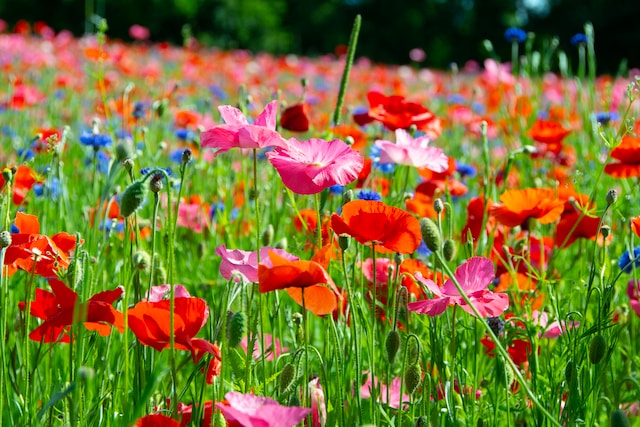
Understanding Low Growing Wildflower Lawns
A low growing wildflower lawn is a type of lawn that’s primarily composed of wildflowers that don’t grow very tall. This creates a beautiful, colorful carpet of flowers that’s not only a feast for the eyes but also a boon for local wildlife, particularly pollinators like bees and butterflies.
There are so many different types of wildflowers that are suitable for a low growing lawn. For instance, you might consider the vibrant hues of the Bird’s Eye Gilia or the delicate beauty of the Baby Blue Eyes. If you’re after something a bit more dramatic, the California Poppy is a showstopper with its bright orange blooms.
🌼 Wildflower Wisdom: When choosing wildflowers for your lawn, consider your local climate and soil conditions. Some wildflowers thrive in certain conditions better than others. 🌼
The Benefits of a Low Growing Wildflower Lawn
The environmental benefits of a wildflower lawn are significant. They require less water and fewer chemicals than traditional grass lawns, making them a more sustainable choice. Plus, they’re a haven for local wildlife, providing food and habitat for pollinators like bees and butterflies.
🌼 Wildflower Wisdom: By choosing native wildflowers, you can support your local ecosystem even more 🌼
The aesthetic appeal of a wildflower lawn is undeniable. Imagine stepping outside to a riot of colors, with different flowers blooming at different times of the year. It’s like having a constantly changing piece of art in your backyard.
And let’s not forget the health and wellness benefits. Gardening is a fantastic way to get some exercise and reduce stress. And there’s something incredibly satisfying about seeing the fruits (or in this case, flowers) of your labor. Plus, if you have kids, a wildflower lawn can be a great way to teach them about nature and the importance of biodiversity.
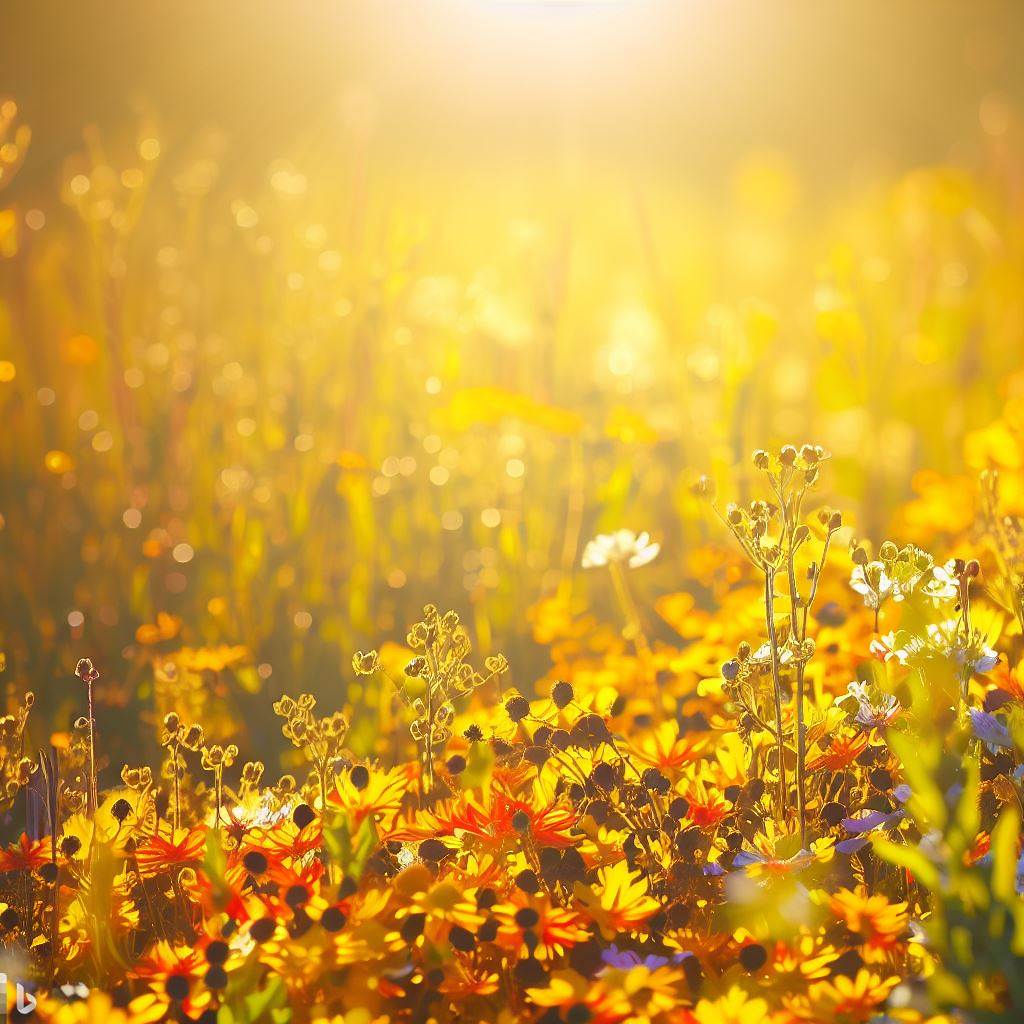
Converting Your Old Lawn
Transforming your traditional lawn into a low growing wildflower lawn is a rewarding process that not only enhances the beauty of your outdoor space but also contributes to local biodiversity. Here are the steps to make the transition:
- Remove the Existing Lawn: Start by getting rid of the existing grass. You can do this manually with a shovel or use a sod cutter for larger areas. Remember, it’s essential to remove as much of the grass and its roots as possible to prevent it from growing back.
- Prepare the Soil: Once the grass is removed, prepare the soil for the wildflower seeds. This usually involves tilling the soil to a depth of about 2 inches and removing any remaining grass roots, stones, or other debris.
- Choose Your Wildflowers: Select a mix of wildflower seeds suitable for your climate and soil type. Consider choosing a variety of species that bloom at different times to ensure color throughout the growing season.
- Sow the Seeds: Scatter the seeds evenly over the prepared soil. You can mix the seeds with sand to help distribute them more evenly. After sowing, lightly rake the area to cover the seeds with soil.
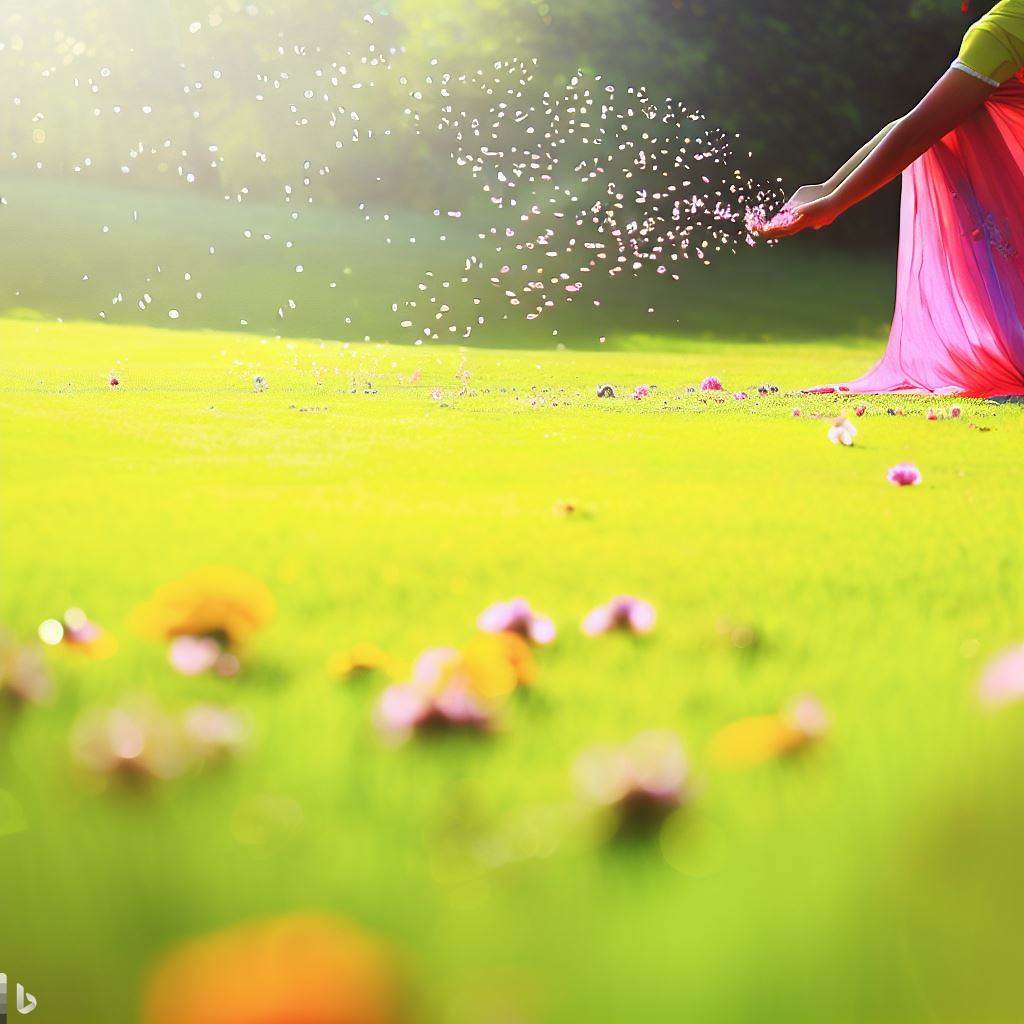
🌼 Wildflower Wisdom: Use a seed spreader for even distribution. 🌼
- Water and Wait: Water the area thoroughly and keep it lightly moist until the seeds germinate and the seedlings are well established.
Remember, patience is key when converting a traditional lawn into a wildflower lawn. It may take a couple of seasons for the wildflowers to fully establish and for your new lawn to reach its full potential. But the wait is definitely worth it when you see your vibrant, low-maintenance wildflower lawn in full bloom.
Wildflower Varieties Suited for a Low Growing Lawn
Here are some examples of wildflower species that would work well in a low-growing wildflower lawn, each bringing its unique charm and benefits to your garden.
- Creeping Thyme (Thymus serpyllum): A fragrant, evergreen herb that forms a dense carpet of tiny purple flowers. It’s drought-tolerant and attracts pollinators.
- English Daisy (Bellis perennis): This perennial has small, daisy-like flowers in white, pink, or red. It’s low-growing and thrives in full sun or partial shade.
- Baby’s Breath (Gypsophila repens): Known for its delicate, tiny white flowers, this low-growing perennial is perfect for adding a touch of elegance to your lawn.
- Blue Star Creeper (Isotoma fluviatilis): A fast-growing ground cover that produces star-shaped, sky-blue flowers. It’s ideal for filling gaps between stepping stones.
- Bird’s Foot Trefoil (Lotus corniculatus): A hardy perennial with bright yellow flowers. It’s drought-tolerant and can thrive in poor soil conditions.
🌼 Wildflower Wisdom: Consider soil pH when selecting wildflower species. 🌼
- Chamomile (Chamaemelum nobile): This low-growing perennial has daisy-like flowers and a sweet, apple-like scent. It’s often used to create fragrant, walkable lawns.

- Clover (Trifolium repens): Clover is a low-maintenance ground cover that adds nitrogen to the soil. Its white flowers attract bees and other pollinators.
- Moss Phlox (Phlox subulata): Also known as creeping phlox, this perennial forms a carpet of vibrant, star-shaped flowers in spring.
- Sweet Alyssum (Lobularia maritima): This low-growing annual produces clusters of tiny, fragrant flowers in white, pink, or purple. It’s excellent for attracting beneficial insects.
- Dwarf Mallow (Malva neglecta): A low-growing perennial with lovely lilac flowers. It’s drought-tolerant and can thrive in a variety of soil conditions.
Where to Purchase Seeds or Mixes
There are numerous high-quality seed mixes available that can help you create a vibrant, low-maintenance garden. We’ve handpicked a selection of products that are perfect for the job. Each one offers a unique blend of wildflower seeds, designed to thrive in a variety of conditions and provide a stunning display of color. Let’s dive into the details of these fantastic products.
(This post contains affiliate links, so we may earn a small commission
when you make a purchase through links on our site at no additional cost to you.)
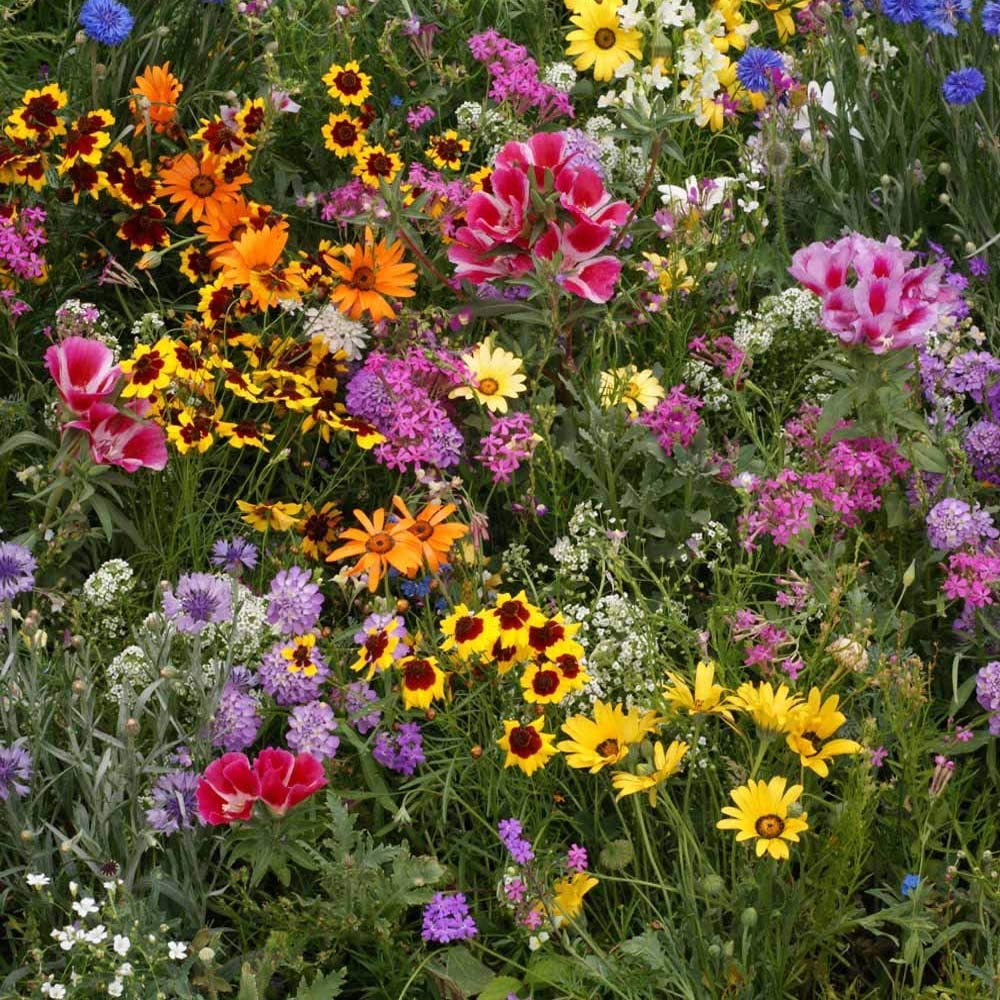
Outsidepride Dwarf, Low Growing Wild Flower Seed Mix – 1/4 LB.
This wildflower mix is specially formulated to be lower-growing than many mixes. The species in this mix are 30% perennial and 70% annual. The species were chosen for their long bloom season, their lower-growth characteristics, and the wide array of lovely colors for a spectacular display. This low growing mix of wildflowers reaches 18 – 24 inches tall in USDA zones 3 – 10.
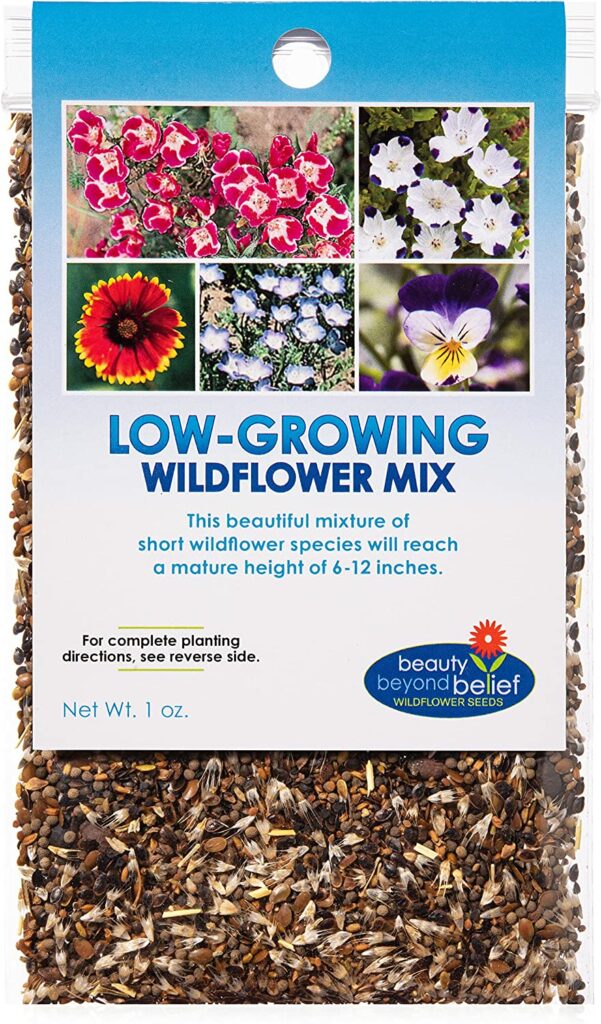
Low Growing Wildflower Seeds Mix
The Low Growing Wildflower Seeds Mix is a vibrant blend of annuals and perennials, perfect for adding a splash of color to your garden. These seeds are easy to grow and maintain, attracting pollinators and flowering quickly. The mix includes a wide variety of seeds, selected to create a semi-wild appearance while maintaining a compact, low height.
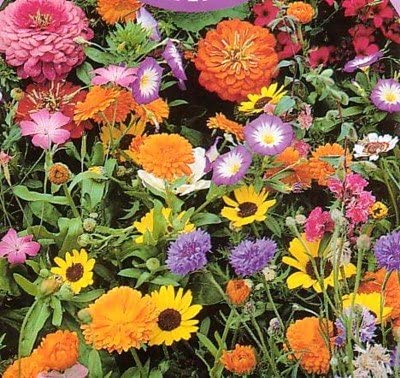
Wildflower Seeds- 1000+ Low Growing
The seeds are intended for full sun exposure and are expected to bloom in the spring. The soil type recommended is loam soil and it requires moderate watering. The wildflower mix is formulated to provide waves of beautiful color and low-maintenance beauty. The seed mix includes a variety of annual, biennial, and perennial seeds.
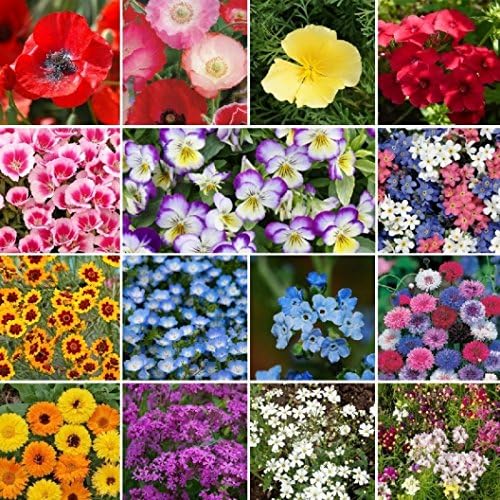
Non GMO Bulk Shorty Low-Grow Wildflower Seed Mix 15 Species of Wildflower Seeds (5 lbs):
This product is a mix of 15 species of petite wildflowers, perfect for gardeners who want a colorful but low-maintenance garden. The seeds are non-GMO, heirloom, and open pollinated, and they prefer full sun exposure. The mix is 75% annual and 25% perennial species, and it contains 100% pure seed with no fillers.
🌼 Wildflower Wisdom: Look for mixes that are specifically designed for low growing wildflower lawns. These will typically include a variety of wildflowers that stay relatively short and are well-suited to lawn settings. 🌼
Remember, starting with quality seeds or mixes is key to creating a thriving wildflower lawn.
Care and Maintenance
One of the many perks of a low growing wildflower lawn is that it’s relatively low maintenance. However, that doesn’t mean you can completely ignore it. Here are some tips on how to care for your wildflower lawn to keep it looking its best.
Firstly, watering. While wildflowers generally require less water than a traditional lawn, they still need some, especially in the beginning. After sowing your seeds, it is a good idea to keep the soil consistently moist until the seedlings are well established. After that, you can reduce watering.
Avoid high-traffic areas for wildflower lawns.
🌼 Wildflower Wisdom: Water in the early morning or late evening to reduce evaporation. 🌼
Secondly, mowing. Yes, you’ll still need to mow your wildflower lawn, but not as often as a grass lawn. The trick is to wait until after the flowers have bloomed and set their seeds. Then, mow on a high setting to encourage more blooms.

Lastly, weeding. While a wildflower lawn is more forgiving of a few weeds, you’ll still want to keep an eye out for any invasive species that could crowd out your wildflowers.
Design Ideas for a Low Growing Wildflower Lawn
Creating a low growing wildflower lawn is not just about sowing seeds and watching them grow. It’s also an opportunity to get creative with your garden design. Here are a few ideas to inspire you.
One approach is to create a “tapestry” effect with different types of wildflowers. Choose species that bloom at different times to ensure a continuous display of color throughout the growing season.
You could also consider incorporating a winding path through your wildflower lawn. This not only adds a charming touch but also allows you to walk through your mini meadow without damaging the flowers.
🌼 Wildflower Wisdom: Use a material like stepping stones or mulch for your path. It’s easy to lay down and blends well with the natural look of a wildflower lawn. 🌼
Another idea is to create “islands” of wildflowers in a sea of grass. This can be a good option if you’re not ready to convert your entire lawn but still want to enjoy the benefits of wildflowers.
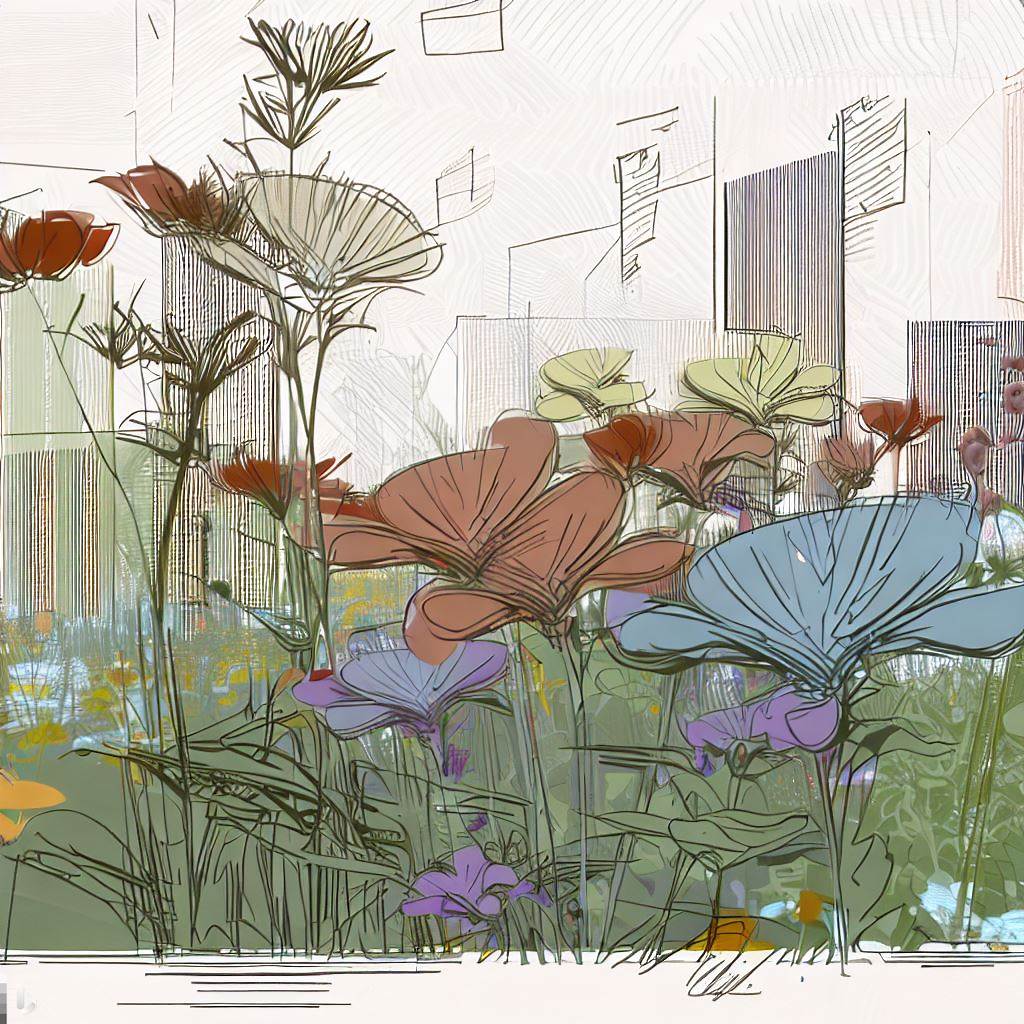
Remember, your wildflower lawn is a canvas. Don’t be afraid to experiment and make it your own!
Addressing Common Questions about Wildflower Lawns
As with any gardening endeavor, there are bound to be questions when it comes to wildflower lawns. Let’s address some of the most common ones.
“Can I convert my existing lawn into a wildflower lawn?” Absolutely! With a bit of preparation, you can transform your traditional grass lawn into a vibrant wildflower lawn.
“Will a wildflower lawn attract bees?” Yes, and that’s a good thing! Bees are important pollinators and having them in your garden is beneficial.
“Is a wildflower lawn really low maintenance?” Compared to a traditional lawn, yes. You’ll save time on mowing and watering, and you won’t need to use fertilizers or pesticides.
🌼 Wildflower Wisdom: Remember, “low maintenance” doesn’t mean “no maintenance”. Your wildflower lawn will still need some care to keep it looking its best. 🌼
From the environmental benefits to the sheer beauty, a low growing wildflower lawn is a gardening choice that’s as rewarding as it is sustainable. So why not give it a try?
Your garden, and the local wildlife, will thank you.

[…] Forget About Pollinators: Some companion plants, like wildflowers and lavender, can help attract pollinators to your garden. This can boost the productivity of your […]